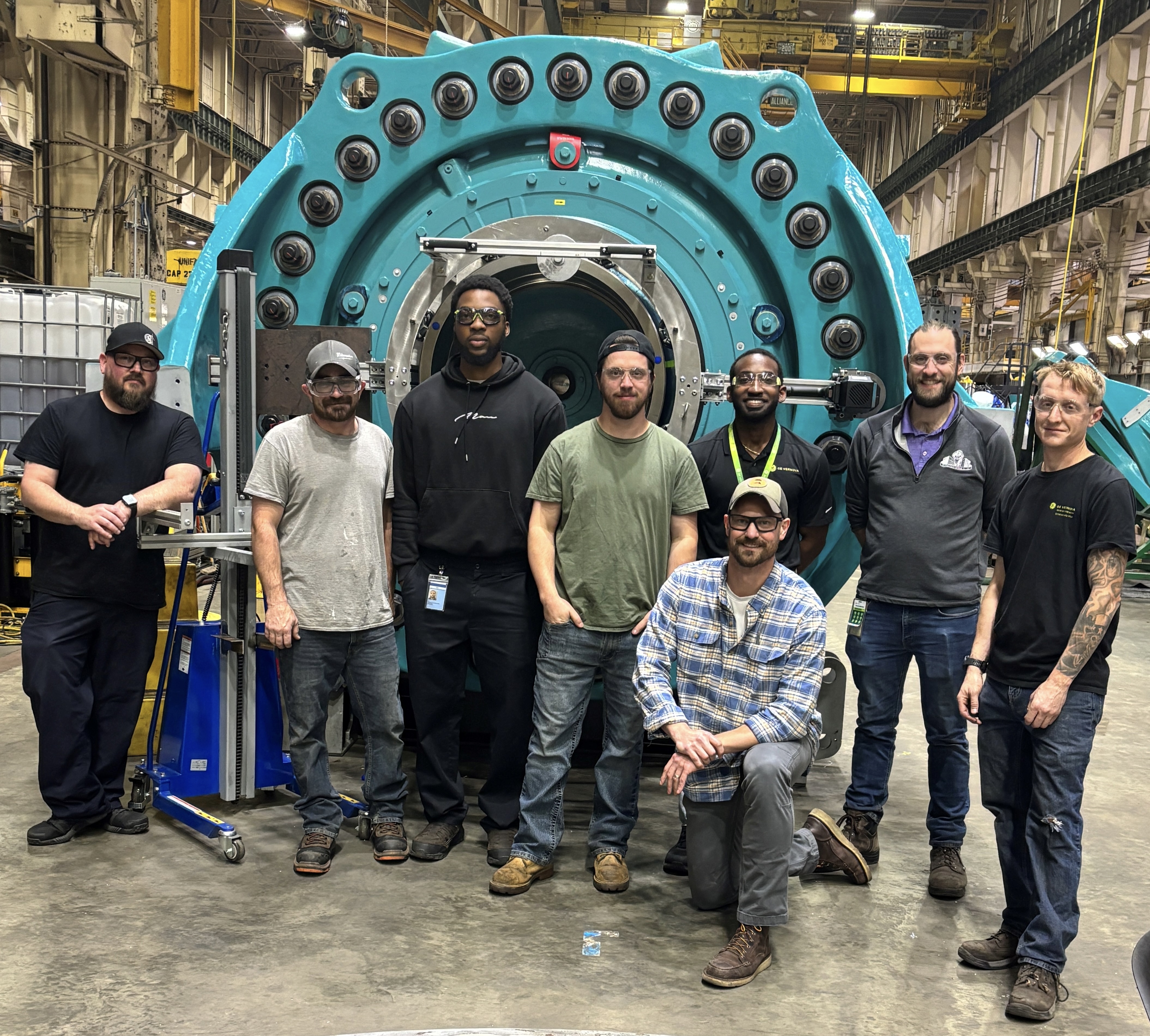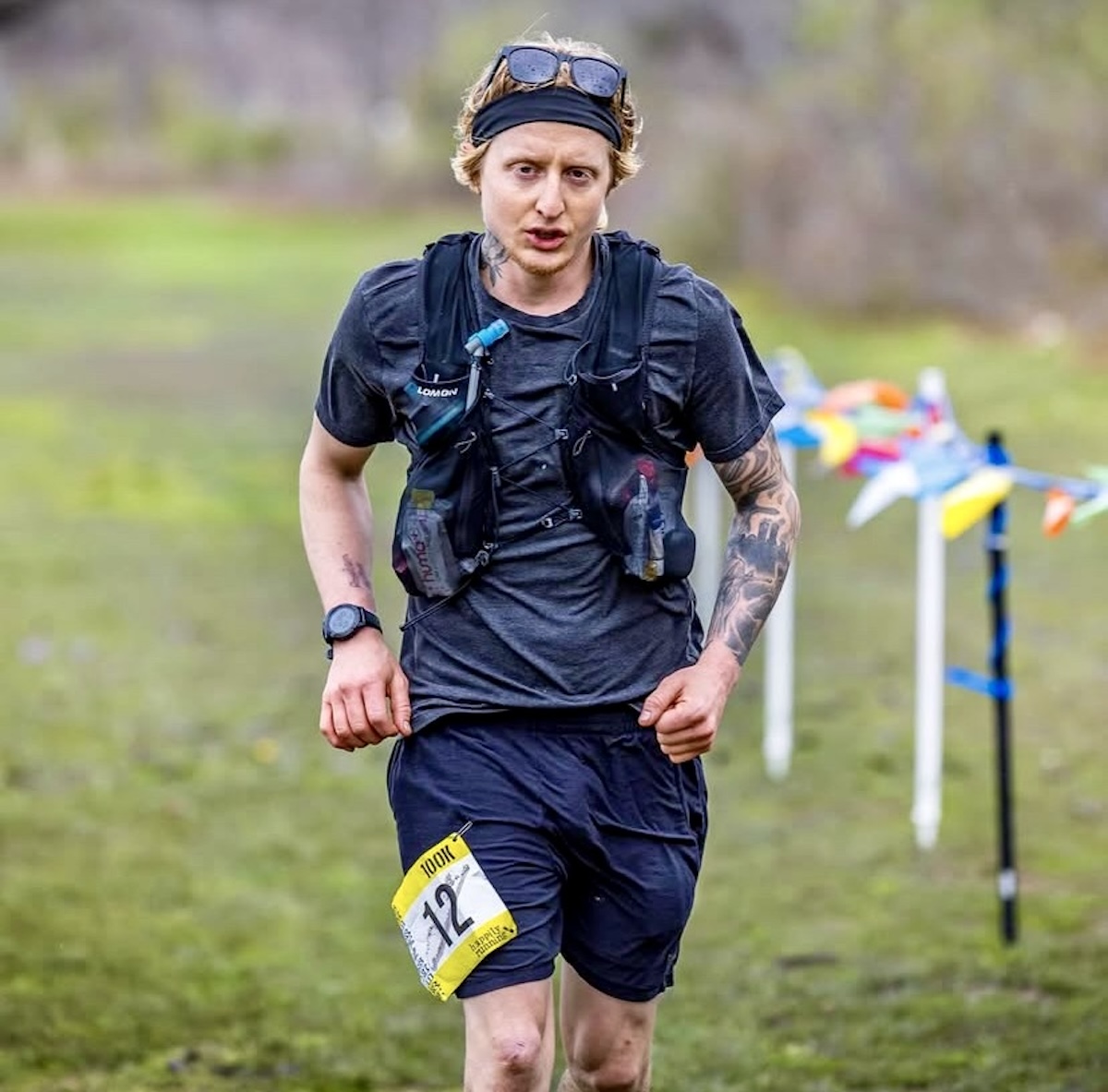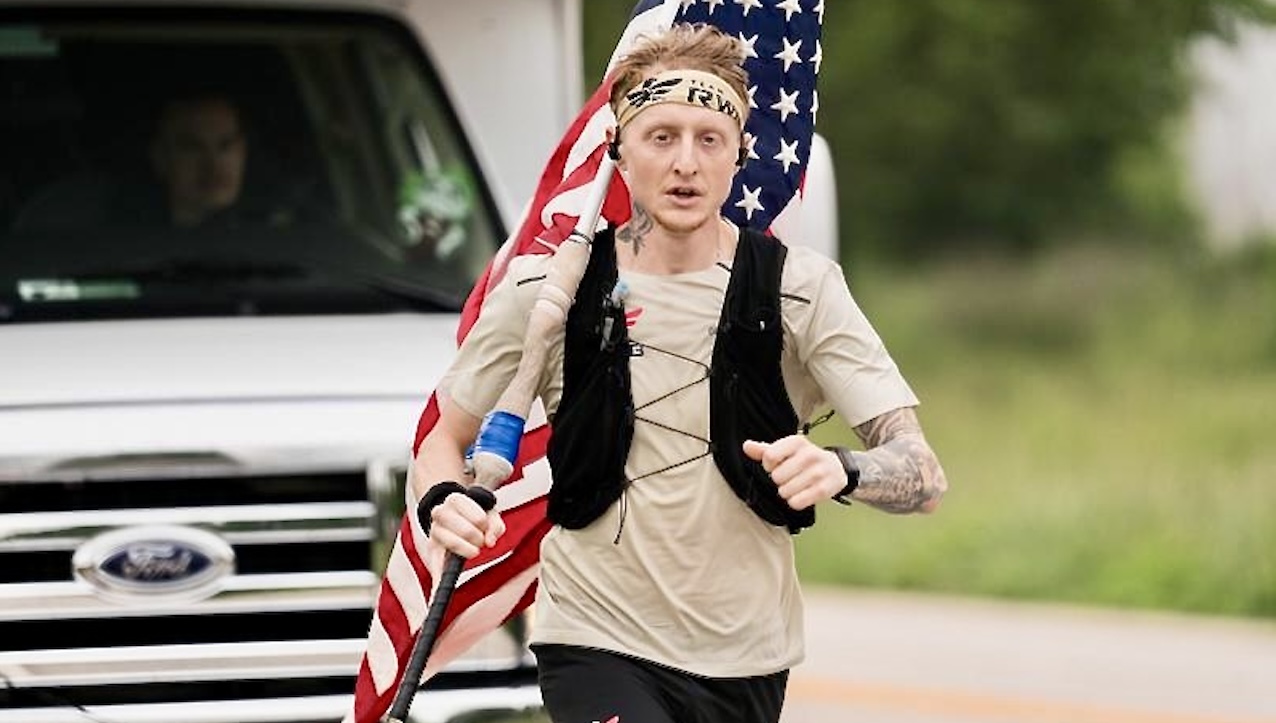This past May, 12 U.S. military veterans joined forces to carry an American flag 3,000 miles from San Diego to Washington, D.C. Team Red, White & Blue completed the Old Glory Ultra Relay in a record time of less than 17 days, raising more than $1 million for the cause of veterans’ health and wellness. One of those dozen men and women was Jordan Buck, an Army vet and steelworker in lean operations at GE Vernova’s manufacturing facility in Schenectady, New York.
A native of upstate New York, Buck enlisted in the Army at age 19, after moving around to different high schools where he struggled to find inspiration. “No real plans, no real motivation, no anything,” he recalls. “And then when I joined the military, things started slowly turning.”
Buck’s athletic pursuits in high school mostly consisted of riding around the hills on his BMX bike, but once he got into his daily workout regimen at Fort Hood, Texas, he discovered that running made him extremely happy. That passion carried on beyond his four years of service, in which he was stationed at Camp Stanley, South Korea, as a cavalry scout, doing reconnaissance on training exercises.

“When I got out of the military, I was trying to find something I could put all my energy into,” he says. “I did a half marathon and did pretty well. Then I read a book and found out that there’s people running 100 miles, and I was like, ‘What? I’m sure I could do that.’” Soon after, he signed up for a 50K race and won it, then entered a six-hour race and won that. “And then I was like, ‘Okay, I need to invest some serious time into this.’”
Continuous Forward Movement
There’s a concept in ultrarunning called “the pain cave.” At some point in a long-distance race, the body starts telling the mind it’s time to stop. But willingly submitting to the misery, digging deep to find hidden reserves of inner strength, and coming out the other side gives runners a new baseline of confidence to go even farther the next time. To most of us mortals it sounds like hell, but for Buck, “it’s kind of what calls me to the sport. It’s like a trance. Ego gets removed, because there’s no space for it. The only thing you have to focus on is one foot in front of the other, continuous forward movement.”
That also happens to be the mantra of lean, another subject Buck knows something about. At the Schenectady facility, he’s a member of the Lean SWAT Team, whose role is to periodically stage kaizen events to find areas for improvement on the manufacturing floor. “Often we will be creating tooling or developing a new system that will improve safety or efficiency,” Buck explains.
As is true in ultramarathons, Buck says, “there are roadblocks throughout the entire process.” This is when resiliency pays off. “Whether it’s running ultramarathons or creating a new tool from scratch, maintaining progress is going to get you where you need to go,” he says. “Nothing is that hard. It’s just patience and problem-solving and not getting frustrated over the little stuff.”

Going National
Buck reached his 100-mile goal last year at the Beast of Burden race near Buffalo, New York. As he’s done in practically every race he’s entered, he won it on his first attempt, completing the course in just over 21 hours, a full hour ahead of the second-place finisher. When he heard about the Old Glory Ultra Relay, he jumped at the opportunity.
Helping him in his quest to run the relay was the Veterans Network, a GE Vernova employee resource group made up of 1,200 veterans and allies around the world. The group seeks to empower veterans in their careers, promotes service in the communities where GE Vernova works, and advocates for the well-being of the company’s veterans. In the lead-up to the ultra relay, the network sponsored a 5K fundraiser in Schenectady and made its own $5,000 donation to Team RWB.
Proof Through the Night
Carrying that U.S. flag across 3,000 miles of deserts, prairies, and mountains required a new level of teamwork. The runners were broken down into three teams of four, with each team responsible for covering about 62 miles in an eight-hour shift — roughly 15 miles per runner per day, on average.

One day about halfway through the relay, one of Buck’s teammates tore a muscle in his leg and had to withdraw. “And there was this guy Jeremy, who was just supposed to be a driver,” Buck recalls, because he’d been injured in an IED blast in Afghanistan and was told he might never walk again. After years of rehab he not only walked but became a runner. “Jeremy freaking stepped right in and carried the flag through his home state of Texas, which was just awesome to see.”
Scarcely a week later, after moving nonstop, day and night, at a pace of less than eight minutes per mile, the veterans carried Old Glory down the National Mall in Washington. For Buck, it was just as much a mental victory as a physical one.
“It’s your mind that tells you no, it’s not your body,” he reflects. The lesson, he says, in ultramarathons or in life, is to keep moving forward and do your best to embrace optimism. “Stresses and other things that are out of our control are unavoidable, so instead of trying to dodge them, become a person that can withstand them. Take pride in everything that you do, maintain continuous forward progress, and don’t forget that the sun will come up tomorrow!”

